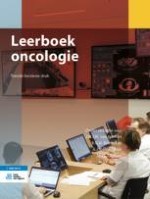Samenvatting
In dit hoofdstuk worden de basisprincipes van doelgerichte of ‘targeted therapy’ besproken. Binnen de oncologie is hormoontherapie de oudste vorm van deze therapie en daarnaast worden de ontwikkelingen in de moderne doelgerichte therapie besproken. Hormoontherapie blijft zich verder ontwikkelen, getuige de registraties van nieuwe vormen van hormoontherapie voor het castratierefractaire prostaatcarcinoom en nieuwe middelen bij het hormoonreceptor-positief mammacarcinoom. De komst van de moderne doelgerichte therapie vond plaats rond de eeuwwisseling en na de archetype doorbraken van trastuzumab voor het HER2-positief mammacarcinoom en imatinib bij CML en GIST is dit veld volop in ontwikkeling. Nieuwe uitdagingen daarbij zijn: optimale patiëntselectie, verbetering van genetische testen en de ontwikkeling en beschikbaarheid van deze over het algemeen dure geneesmiddelen. ‘Targeted therapy’ heeft voor grote doorbraken gezorgd in de behandeling van patiënten met kanker en de verwachtingen van nieuwe ontwikkelingen op dit terrein blijven hooggespannen. Het is te verwachten dat het oude concept van tumorspecifieke behandeling in de toekomst (deels) vervangen zal worden door ‘driver’-mutatiespecifieke behandelingen, misschien zelfs onafhankelijk van het type primaire tumor.
